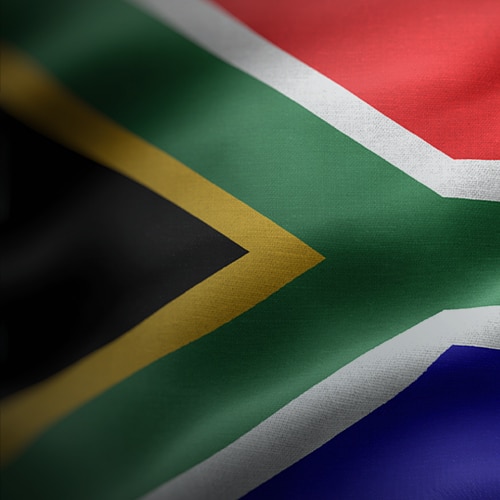Coffee Table Economics (CTE) with Anchor, by Casey Sprake, is distributed periodically. CTE is a compilation of Casey’s research, analysis, and perspectives on key South African (SA) and global economic data such as inflation, spending trends, and international market dynamics, including socio-political events and the multiple factors shaping the world economy.
Executive summary
In this week’s edition, we highlight the following:
- Muted April inflation strengthens case for rate cut. SA’s headline consumer inflation edged marginally higher in April, rising to 2.8% YoY from 2.7% in March. From a macroeconomic standpoint, the latest inflation data reinforce the case for a more accommodative monetary stance. Core inflation continues to moderate, wage growth remains subdued, and consumer demand is relatively weak — all of which point to real interest rates that are still restrictive.
- Budget 3.0: Walking the fiscal tightrope without a VAT hike. The third iteration of SA’s 2025/2026 Budget — informally dubbed Budget 3.0 — underscores the National Treasury’s (Treasury) increasingly complex balancing act. Tasked with stabilising public finances amid a deteriorating economic environment, policymakers were also constrained by the decision to abandon the proposed politically unpalatable increase in value-added tax (VAT).
- The global R&D race: Investment, innovation, and economic power. According to the latest Organisation for Economic Co-operation and Development (OECD) data, in 2023, worldwide research and development (R&D) spending reached a record US$2.8trn. While the headline number is impressive, the more telling trend is how nations are prioritising and structuring that investment. For countries seeking to maintain or enhance their competitiveness, the message is clear: R&D is no longer optional—it is the foundation of future prosperity and strategic influence.
Muted April inflation strengthens case for rate cut
SA’s headline consumer inflation edged marginally higher in April, rising to 2.8% YoY from 2.7% in March. While the uptick was modest, it was further counterbalanced by a softening in core inflation (which excludes the more volatile categories of food and energy), easing to 3.0% YoY from 3.1% the previous month. This deceleration in core inflation suggests that underlying pricing pressures remain subdued, consistent with a broader trend of muted inflation across non-volatile goods and services.
Despite the overall moderation, food and non-alcoholic beverages (NAB) remained a key source of upward pressure. Inflation in this category accelerated to 4.0% YoY — the highest annual rate since September 2024, when it stood at 4.6%. On a monthly basis, prices rose by a sharp 1.3%, marking the steepest increase since October 2023. The primary contributor to this surge was the rise in meat prices, particularly for beef products such as stewing beef, mince, and steak. Between March and April, meat prices jumped by 2.3%, the most significant monthly gain since January 2023. Given that meat makes up 5.1% of the average household consumption basket, this sharp increase is especially burdensome for lower-income households, where food expenses account for a larger share of overall expenditure.
In contrast, fuel prices provided significant relief and remained a key disinflationary factor. Average fuel costs declined by 3.2% MoM in April. YoY, motorists are now paying 13.4% less for fuel. Inland 95-octane petrol dropped to R21.62 per litre (from R22.34 in March), while diesel fell to R21.94 (from R22.80). The continued weakness in global oil prices (despite fluctuations in the rand) has been instrumental in containing domestic inflation. Lower fuel prices not only ease direct costs for consumers but also reduce transportation and input costs for businesses, indirectly helping to suppress broader price pressures across the economy.
Looking ahead, domestic inflationary pressures are expected to remain contained. The average inflation forecast for 2025 has been revised downward to 3.3%, below the South African Reserve Bank’s (SARB) March projection of 3.6%. Inflation is now expected to settle around the midpoint of the SARB’s 3%–6% target range by 2027. A key factor behind this outlook is the persistent decline in global oil prices. OPEC+’s unexpected decision to ramp up production has tipped the oil market into surplus, pushing Brent crude prices down from around US$72/bbl to roughly US$63/bbl, with the potential to test lows near US$59/bbl. This dynamic is likely to keep fuel-driven inflation in check for the foreseeable future.
The bottom line
From a macroeconomic standpoint, the latest inflation data reinforce the case for a more accommodative monetary stance. Core inflation continues to moderate, wage growth remains subdued, and consumer demand is relatively weak — all of which point to real interest rates that are still restrictive. In light of this, we expect the SARB to cut the repo rate by 25 bpts at its upcoming Monetary Policy Committee (MPC) meeting on 29 May. The outlook for a third interest rate cut later in 2025 remains uncertain, hinging on a complex mix of global and domestic factors, including international commodity prices, currency movements, and ongoing geopolitical tensions. However, with inflation largely under control and the economy operating below potential, the balance of risks may continue to tilt in favour of easing.
Budget 3.0: Walking the fiscal tightrope without a VAT hike
The third iteration of SA’s 2025/26 Budget — informally dubbed Budget 3.0 — underscores Treasury’s increasingly complex balancing act. Tasked with stabilising public finances amid a deteriorating economic environment, policymakers were also constrained by the decision to abandon the proposed politically unpalatable increase in VAT. Since the original budget presentation in February, both global and domestic economic conditions have weakened, rendering the fiscal task far more sobering. Against this backdrop, Budget 3.0 delivers a reality check on SA’s macroeconomic and fiscal fundamentals. While the revised budget remains broadly credible, it makes clear that the long-term fiscal roadmap is still in flux. The real test now shifts to the Medium-Term Budget Policy Statement (MTBPS), due in five months, where the contours of a more sustainable fiscal strategy will need to be outlined in greater detail.
Treasury projects real GDP growth to average just 1.7% over the Medium-Term Expenditure Framework (MTEF) period, reflecting entrenched structural constraints, lacklustre investment, and ongoing challenges in energy and logistics. This subdued growth outlook has direct fiscal consequences, with revenue projections having been revised down significantly. Making matters more difficult was the decision to forgo the VAT hike — a move that, while politically expedient, sharply limits revenue-raising options.
To fill the resulting gap, Treasury turned to so-called “fiscal drag” by not adjusting personal income tax (PIT) brackets for inflation. This effectively increases individuals’ tax burden without changing nominal rates and is expected to yield R49.4bn over three years. Additional revenue will be sourced from above-inflation increases in excise duties on alcohol and tobacco, as well as a freeze on medical tax credit inflation adjustments, collectively raising R5.8bn. In place of a VAT hike, Treasury has opted for inflation-linked increases to the general fuel levy. This less politically sensitive alternative spreads the tax burden more broadly while minimising immediate pressure on consumers.
On the expenditure side, the revised budget introduces R70bn in spending cuts over the FY26–FY28 period, relative to the March 2025 framework. This marks a significant policy pivot and is a clear attempt to maintain fiscal credibility. The cuts help offset the revenue shortfall and support efforts to stabilise the main budget deficit. Financial markets are likely to view this consolidation effort as a modest but credible step in the right direction. However, total expenditure is still projected to be R224bn higher than a year ago, reflecting growing commitments to social protection (particularly grants), infrastructure development, frontline services, and the 2025 public sector wage agreement. This highlights the inherent tension between fiscal consolidation and political or developmental imperatives.
Meanwhile, SA’s debt metrics continue to worsen. Gross loan debt is now forecast to stabilise at 77.4% of GDP in 2025/2026, up from the previous estimate of 76.2%, primarily due to a downward revision in the nominal GDP base. More concerning, debt-service costs have climbed to an average of 5.4% of GDP over the MTEF (amounting to R1.351trn), making it the second-largest spending item after education. This underscores the increasing crowding-out of developmental and capital spending. In a marked shift, no new bailout allocations have been made to state-owned enterprises (SOEs), and the Eskom debt-relief package has been reduced by an additional R20bn, on top of a R4bn cut announced earlier. This signals a firmer stance on state support, likely to be welcomed by investors. However, implementation risks remain high. The success of these measures will depend on the government’s ability to enforce conditionalities and enhance SOE governance – a tall order given historical track records.
Looking ahead, Treasury has committed to redesigning the budget process starting in 2026, leveraging insights from detailed spending reviews. If properly executed, these reforms could yield up to R38bn in additional fiscal savings. Key reform measures include eliminating so-called “ghost workers” from the public payroll and strengthening public financial management systems – steps that signal a welcome move toward greater fiscal discipline.
Overall, the 2025 Budget update is viewed as marginally bond-positive and moderately supportive of the rand over the medium term. This is primarily due to its emphasis on expenditure restraint in the face of weaker revenue projections. However, markets and ratings agencies will be watching closely for further clarity and commitment in the upcoming MTBPS. With fiscal credibility under ongoing pressure, execution and follow-through, not just good intentions, will be the ultimate litmus test.
The bottom line
Crucially, the government has chosen to rein in spending rather than implement broad-based or distortionary tax increases—an approach that sends a constructive message to investors. However, the risk of implementation delays remains elevated, and follow-through will be critical to maintaining credibility. That said, it is difficult to ignore the question of why such a pragmatic version of the Budget could not have been presented in February, potentially sparing the economy the uncertainty and costs associated with months of policy indecision. Nonetheless, there appears to be a shift in fiscal strategy, suggesting that the realities of SA’s coalition-era politics may be nudging the country away from past policy orthodoxy. Still, the long-term sustainability of public finances will ultimately depend on whether the state can deliver the structural economic reforms necessary to unlock stronger growth and ease the rising debt burden.
The global R&D race: Investment, innovation, and economic power
According to the latest OECD data, 2023 global R&D spending reached a record US$2.8trn – nearly triple the inflation-adjusted figure from the year 2000. This dramatic growth underscores the increasing importance that countries and corporations place on innovation as a cornerstone of economic competitiveness. R&D is no longer a niche budget line; it has become a fundamental driver of progress across critical sectors, from artificial intelligence (AI) and biotechnology to defence systems, clean energy, and advanced manufacturing.
The distribution of R&D spending tells a story of shifting global influence. Asian economies led the charge in 2023, accounting for 46% of total global R&D expenditure. North America followed with 29%, and Europe trailed slightly behind at 21%. This geographic tilt toward Asia reflects the region’s growing dominance in tech-heavy industries—especially semiconductors, electronics, and robotics—and highlights its strategic prioritisation of innovation to climb the global value chain. China, in particular, has made staggering strides. From contributing just 4% of global R&D in 2000, it now commands 26%, second only to the US. In absolute terms, China’s R&D spending reached US$723bn in 2023, an eighteenfold increase in just over two decades. Notably, the private sector was responsible for over 77% of this spending, matching the level seen in the US, and reflecting the growing role of Chinese tech giants and manufacturers in innovation-led growth. This rise in R&D investment has global implications. China’s aggressive pursuit of technological leadership is reshaping global supply chains, intensifying competition in critical sectors like semiconductors, electric vehicles (EVs), and AI. It also raises geopolitical concerns, particularly in the West, where governments are increasingly linking national security to domestic innovation capacity.
Across the 38 OECD member countries*, R&D spending averaged 2.7% of GDP in 2023, amounting to US$1.9trn. While the total volume is impressive, it is the intensity, measured as a percentage of GDP, that reveals deeper strategic priorities. Countries like Israel, South Korea, Taiwan, and Sweden stand out not only for their investment volume but for their unmatched commitment relative to the size of their economies. Israel leads the world in R&D intensity. Spending US$28.3bn in 2023, it dedicates a larger share of its GDP to research than any other country, and more than double the OECD average. Remarkably, 92% of this comes from the private sector, a testament to its vibrant innovation ecosystem, particularly in high-tech and defence industries. Israel also boasts the highest number of startups per capita globally, making it a model for how targeted R&D investment can yield transformative economic outcomes.
Taiwan is another standout, particularly in corporate-driven R&D. While its growth in R&D slowed to 3.7% in 2023 from a five-year annual average of 8.8%, the sector remains heavily driven by semiconductors—a key industry for Taiwan and for the entire global economy. With US$59.9bn spent on R&D in 2023, Taiwan ranked eighth among OECD countries and remains a linchpin in global tech supply chains. This kind of strategic specialisation shows how smaller economies can leverage focused R&D to exert disproportionate influence on global industries. South Korea and Sweden also consistently rank among the top in R&D intensity, with strong public-private collaboration, government incentives, and a national culture that prizes education and innovation. These countries exemplify how R&D can serve as a long-term engine for competitiveness, productivity, and economic resilience.
The rapid expansion and shifting geography of R&D spending have significant implications for the global economic landscape:
- Innovation as a geopolitical lever: R&D is increasingly seen as a tool of strategic autonomy. Countries with strong R&D ecosystems can reduce their reliance on foreign technologies, set standards in emerging industries, and project soft power through technological exports and platforms.
- Shifting competitive landscapes: As Asia (particularly China) pulls ahead in R&D spending, Western economies face mounting pressure to boost their own innovation systems. This has already triggered renewed industrial policy efforts in the US and Europe, with major investments in chip manufacturing, clean tech, and digital infrastructure.
- Global supply chain realignment: Concentrated R&D in certain sectors and regions (such as semiconductors in Taiwan or green tech in Europe) creates chokepoints that can power economic advantage and expose vulnerabilities. The COVID-19 pandemic and geopolitical tensions have already begun to reshape supply chains, with companies seeking to diversify and governments pushing for greater domestic capability.
- Private sector ascendancy: The growing share of R&D funded by the private sector (77% in China and over 90% in Israel) suggests that corporations are increasingly setting the pace of global innovation. This raises important questions about the direction of innovation and the need for public policy to align private incentives with broader societal goals, such as climate change mitigation and equitable access to new technologies.
The bottom line
The global race for innovation is accelerating, with R&D spending at its core. While the headline number of US$2.8trn spent on R&D in 2023 is impressive, the more telling trend is how nations are prioritising and structuring that investment. As Asia takes the lead and private firms drive more of the activity, the world’s economic and geopolitical dynamics are being reshaped in real time. For countries seeking to maintain or enhance their competitiveness, the message is clear: R&D is no longer optional—it is the foundation of future prosperity and strategic influence.
*Australia, Austria, Belgium, Canada, Chile, Colombia, Costa Rica, the Czech Republic, Denmark, Estonia, Finland, France, Germany, Greece, Hungary, Iceland, Ireland, Israel, Italy, Japan, Korea, Latvia, Lithuania, Luxembourg, Mexico, the Netherlands, New Zealand, Norway, Poland, Portugal, Slovak Republic, Slovenia, Spain, Sweden, Switzerland, Türkiye, the UK and the US.




